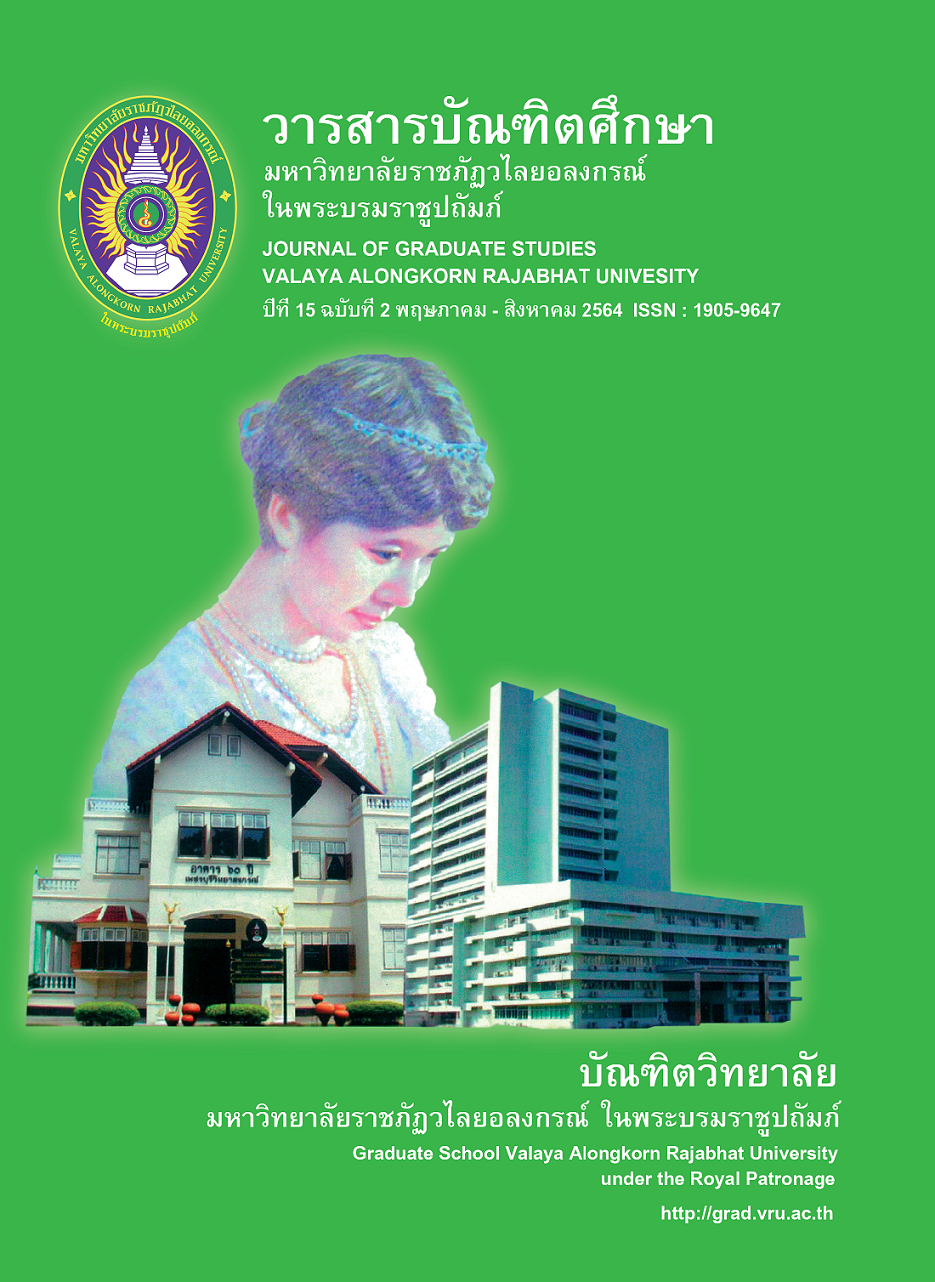LEARNING MODEL BASED ON CONNECTIVISM AND COGNITIVE NEUROSCIENCE ON APPLICATION TO ENHANCE ANALYTICAL THINKING FOR UNDERGRADUATE STUDENTS
Main Article Content
Abstract
The purpose of this research were: 1) to develop the learning model based on Connectivism and cognitive neuroscience on application to enhance analytical thinking for undergraduate students, 2) to evaluate and verify the learning model based on Connectivism and cognitive neuroscience on application to enhance analytical thinking for undergraduate students. The sample includes 5 experts of Educational Technology who are sampled by Purposive sampling. The research tools are learning model based on Connectivism and cognitive neuroscience on application to enhance analytical thinking for undergraduate students and the evaluation of learning model based on Connectivism and cognitive neuroscience on application to enhance analytical thinking for undergraduate students. The statistics used in the analysis are arithmetic mean and standard deviation.
The research results were the learning model based on Connectivism and cognitive neuroscience on application to enhance analytical thinking for undergraduate students consisted of two parts as follows: part one is a step of learning included of 1) prepare, 2) access, 3) create, 4) conclude, and 5) show & share and part two is learning environment included of 1) related case, 2) resource, 3) analytical thinking tools, 4) communication and 5) consultant. The experts who evaluated of learning model based on Connectivism and cognitive neuroscience on application to enhance analytical thinking for undergraduate students were at the high level. ( = 4.68, S.D. = .47)
Article Details

This work is licensed under a Creative Commons Attribution-NonCommercial-NoDerivatives 4.0 International License.
บทความทุกเรื่องได้รับการตรวจความถูกต้องทางวิชาการโดยผู้ทรงคุณวุฒิ ทรรศนะและข้อคิดเห็นในบทความ Journal of Global of Perspectives in Humanities and Social Sciences (J-GPHSS) มิใช่เป็นทรรศนะและความคิดของผู้จัดทำจึงมิใช่ความรับผิดชอบของบัณฑิตวิทยาลัย มหาวิทยาลัยราชภัฏวไลยอลงกรณ์ ในพระบรมราชูปถัมภ์ กองบรรณาธิการไม่สงวนสิทธิ์การคัดลอก แต่ให้อ้างอิงแหล่งที่มา
References
Khemmani, T. (2017). sāt kānsō̜n [Science of Teaching Pedagogy]. 21th ed. Bangkok: Chulalongkorn University Press.
Kongsila, T. (2013). rūpbǣp kānrīanrū dōi chai sapphayākō̜n pen thān phư̄a phatthanā thaksa kān khit wikhro̜ chœ̄ng tūalēk kānsư̄sān læ kānchai theknōlōyī sārasonthēt samrap nisit radap parinyā trī [Resource-Based Learning Model to Develop Numerical Analysis Communication and Information Technology Skills for Undergraduate Students]. Doctoral dissertation. King Mongkut's University of Technology North Bangkok.
Kotchabhakdi, N. (2008). kānphatthanā læ wiwatthanākān khō̜ng prasāt witthayāsāt nai prathēt Thai : ʻadīt patčhuban læ ʻanākhotss [Development and Evolution of Neuroscience in Thailand : Past, Present and Future]. North-Eastern Thai Journal of Neuroscience. 3(4), 1-15.
Kotchabhakdi, N. (2016). Cognitive Neuroscience for Psychiatrists and Mental Health Workers. In O. Chawang (Ed.), rūam botkhwām wichākān Brain and Mind Forum khrang thī sō̜ng: Cognitive Neuroscience [Brain and Mind Forum 2th: Cognitive Neuroscience]. (pp. 8-12). Bangkok: Sahamitr Printing & Publishing.
Office of the Education Council. (2016). saphāwa kānsưksā Thai pī sō̜ngphanhārō̜ihāsipčhet / sō̜ngphanhārō̜ihāsippǣt čha patirūp kānsưksā Thai hai than lōk nai satawat thī yīsipʻet dai yāngrai [Thai Educational Conditions 2014/2015: How can Thai education be up to date in the 21st century]. n.d. Bangkok: Pimdeekarnpim.
Panich, V. (2012). sāng thaksa hai phū rīan phrō̜m sū satawat thī yīsipʻet [Build skills for learners into the 21st century]. School in focus. 4(11), 6.
Ruamkaew, K., Simmatun, P., & Samavardhanae, K. (2016). rūpbǣp kānrīanrū bǣp pœ̄t tām nǣokhit khō̜nnektiwit sưm phư̄a songsœ̄m kān khit sāngsan samrap naksưksā parinyā trī [Open Learning Model Base on Connectivism for Enhancing the Undergraduate Students’ Creative Thinking]. Prae-wa Kalasin Journal of Kalasin University. 3(1), 45-63.
Saranukrom IT. (2018). Application ʻǣp phlikhēchan khư̄ ʻarai [What is an application?]. Retrieved from https://www.mindphp.com/คู่มือ/73-คืออะไร/3647-application-แอพพลิเคชั่น-คืออะไร.html
Sungpum, W. (2011). rūpbǣp kānčhatkān rīan kānsō̜n tām nǣo thritsadī chư̄am yōng niyom [Instructional Model based on Connectivism Theory]. Journal of Vocational and Technical Education (JVTE). 1(2), 50-56.
Wongrattana, C. (2017). theknik kānsāng khrư̄angmư̄ wičhai [Techniques for creating research tools]. 1sted. Bangkok: Amornprint.


